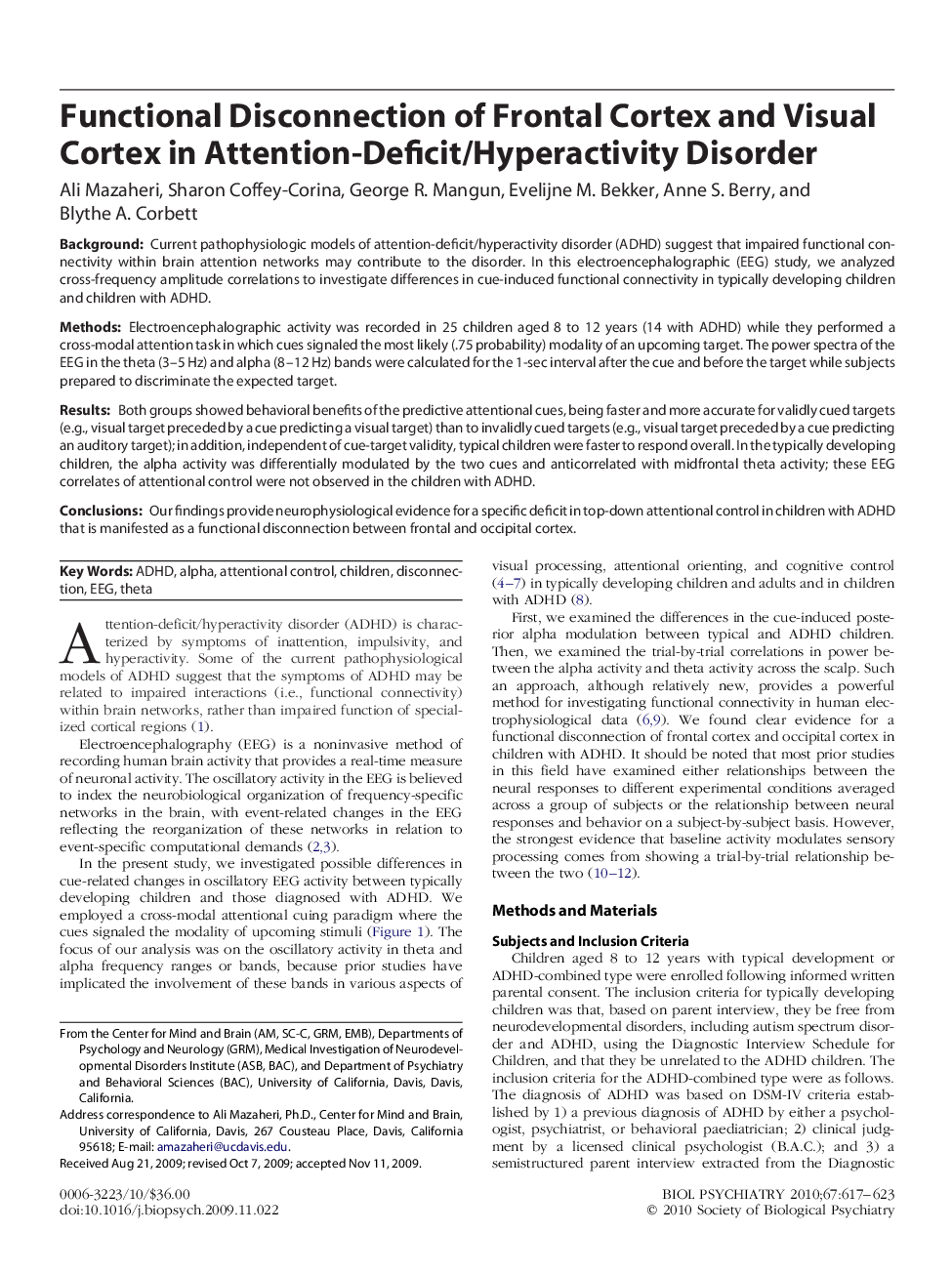| Article ID | Journal | Published Year | Pages | File Type |
|---|---|---|---|---|
| 6229102 | Biological Psychiatry | 2010 | 7 Pages |
BackgroundCurrent pathophysiologic models of attention-deficit/hyperactivity disorder (ADHD) suggest that impaired functional connectivity within brain attention networks may contribute to the disorder. In this electroencephalographic (EEG) study, we analyzed cross-frequency amplitude correlations to investigate differences in cue-induced functional connectivity in typically developing children and children with ADHD.MethodsElectroencephalographic activity was recorded in 25 children aged 8 to 12 years (14 with ADHD) while they performed a cross-modal attention task in which cues signaled the most likely (.75 probability) modality of an upcoming target. The power spectra of the EEG in the theta (3-5 Hz) and alpha (8-12 Hz) bands were calculated for the 1-sec interval after the cue and before the target while subjects prepared to discriminate the expected target.ResultsBoth groups showed behavioral benefits of the predictive attentional cues, being faster and more accurate for validly cued targets (e.g., visual target preceded by a cue predicting a visual target) than to invalidly cued targets (e.g., visual target preceded by a cue predicting an auditory target); in addition, independent of cue-target validity, typical children were faster to respond overall. In the typically developing children, the alpha activity was differentially modulated by the two cues and anticorrelated with midfrontal theta activity; these EEG correlates of attentional control were not observed in the children with ADHD.ConclusionsOur findings provide neurophysiological evidence for a specific deficit in top-down attentional control in children with ADHD that is manifested as a functional disconnection between frontal and occipital cortex.
